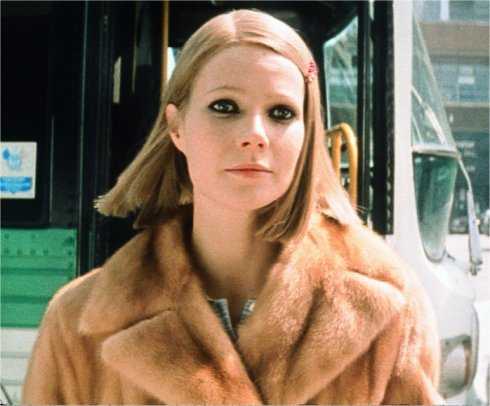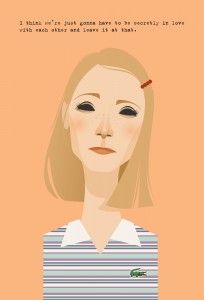 Wes Anderson is a master at creating characters with styles that reveal their inner workings. As visually appealing as the characters and costuming may be, Anderson includes details that go beyond the aesthetic. Anderson understands the unspoken, ever-telling language of fashion and he coyly employs it to develop his characters’ internal struggles and motivations from the moment they are presented to us. From Rosemary in her modest teacher cardigans and tightly ponied and obsessively barretted hair to Suzy in her “Sunday School shoes” and peter pan collared sixties dresses and blue shadow–we find a world of women who possess a signature style reflective of who they are. Wes Anderson’s styles his female characters with precision and their oddball-loveliness is magical and musical. It’s not just Anthony who is “complicated” but Inez, Rosemary, Margot, Jane, Suzy and the list goes on. The clothes and the makeup and the hair forge a character we simultaneously understand and want to know more about. Their specific, consistent attire are shining examples of how identity can inform personal style.
Wes Anderson is a master at creating characters with styles that reveal their inner workings. As visually appealing as the characters and costuming may be, Anderson includes details that go beyond the aesthetic. Anderson understands the unspoken, ever-telling language of fashion and he coyly employs it to develop his characters’ internal struggles and motivations from the moment they are presented to us. From Rosemary in her modest teacher cardigans and tightly ponied and obsessively barretted hair to Suzy in her “Sunday School shoes” and peter pan collared sixties dresses and blue shadow–we find a world of women who possess a signature style reflective of who they are. Wes Anderson’s styles his female characters with precision and their oddball-loveliness is magical and musical. It’s not just Anthony who is “complicated” but Inez, Rosemary, Margot, Jane, Suzy and the list goes on. The clothes and the makeup and the hair forge a character we simultaneously understand and want to know more about. Their specific, consistent attire are shining examples of how identity can inform personal style.
Inez from Bottle Rocket
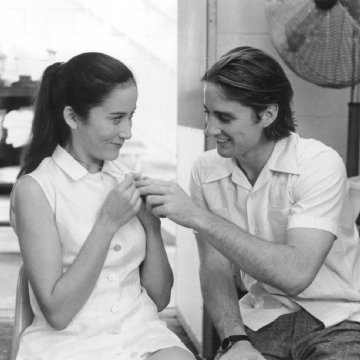
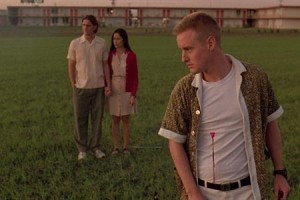 With her long straight hair and stark white collared button front maid dress, Inez was Anderson’s first on-screen study in the language of dressing women. Inez wears the same thing for most of the film because we see her while she is at work. But I feel Anderson picked up on something here that he has woven into all of his films since Bottle Rocket–a signature style that suggests a sort of storybook innocence and simplicity. Inez wears the same thing–not out of necessity–but because it is interlinked to who she is a la Madeline or Peppermint Patty. If we drew freckles and a scrappy striped shirt or a straw hat with a ribbon the first thing we would think of is these characters. The fashion does not make the person, but in some ways it tells the person’s story and invites you into his/her world.
With her long straight hair and stark white collared button front maid dress, Inez was Anderson’s first on-screen study in the language of dressing women. Inez wears the same thing for most of the film because we see her while she is at work. But I feel Anderson picked up on something here that he has woven into all of his films since Bottle Rocket–a signature style that suggests a sort of storybook innocence and simplicity. Inez wears the same thing–not out of necessity–but because it is interlinked to who she is a la Madeline or Peppermint Patty. If we drew freckles and a scrappy striped shirt or a straw hat with a ribbon the first thing we would think of is these characters. The fashion does not make the person, but in some ways it tells the person’s story and invites you into his/her world.
Anderson equips Inez with a simple gold chain necklace with a locket containing a photograph of her sister and she strolls through the outdoor hotel corridors with bare feet. She reflects the romantic whimsy and rejuvenation of young love and the power of being open to new things. She is almost a human representation of what Dignan, Anthony and Bob are after–freedom, adventure and innocence. At the same time, Inez is clearly very dedicated to the life she knows.
Rosemary Cross from Rushmore
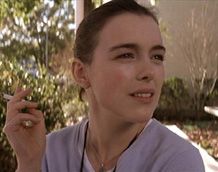
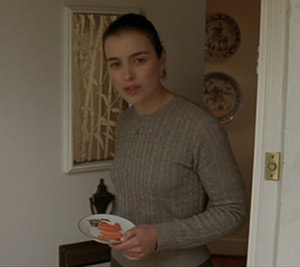 Cable knit sweaters, teacher cardigans, high necklines, tightly bound hair. Proper, kind, quiet. Afternoon snacks. Bleachers.
Cable knit sweaters, teacher cardigans, high necklines, tightly bound hair. Proper, kind, quiet. Afternoon snacks. Bleachers.
Margot from The Royal Tenenbaums
Striped polo dresses, gators, bobbed hair, single barrette, mink coat, eyeliner. Baths. Secrets.
Jane from The Life Aquatic
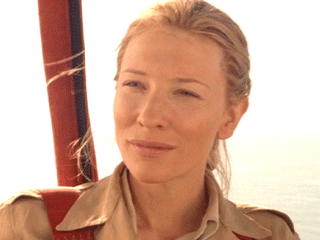
![internews_204295_1[270203]](http://grandabandon.com/wp-content/uploads/2012/05/internews_204295_1270203.jpg) Khaki, safari gear, neutrals, cargo pockets, ponied braid. Chewing gum, abbreviated curse words, bunk beds, tape recorder.
Khaki, safari gear, neutrals, cargo pockets, ponied braid. Chewing gum, abbreviated curse words, bunk beds, tape recorder.
Patricia from The Darjeeling Limited
 White robe. Tunic, brown leather belt, boots. Cross pendant.
White robe. Tunic, brown leather belt, boots. Cross pendant.
Rita from The Darjeeling Limited
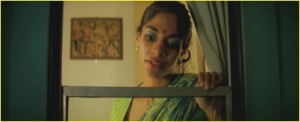 Green, blue, gold. Sari. Bindi. Pink-red lips. Thick rimmed glasses.
Green, blue, gold. Sari. Bindi. Pink-red lips. Thick rimmed glasses.
Jack’s Girlfriend from Hotel Chevalier
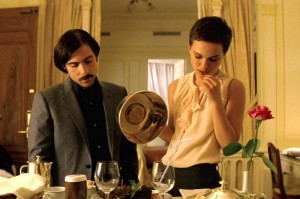 Pixie cut. Floppy bowed blouse tucked in. Twiggy-esque. Bathrobe.
Pixie cut. Floppy bowed blouse tucked in. Twiggy-esque. Bathrobe.
Mrs. Fox from Fantastic Mr. Fox
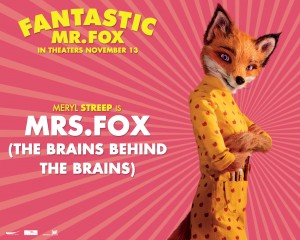 Sunshine yellow, big pockets, loud print, 1950′s housewife. Tailored, structured, poised.
Sunshine yellow, big pockets, loud print, 1950′s housewife. Tailored, structured, poised.
Suzy from Moonrise Kingdom
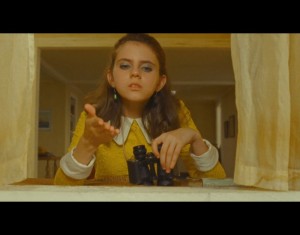
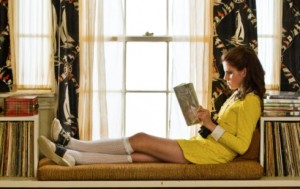
 Peter pan collars, babydoll dresses, knee socks, black and white oxfords, blue eyeshadow. Library books. Lefty scissors. Binoculars. Cat in hand.
Peter pan collars, babydoll dresses, knee socks, black and white oxfords, blue eyeshadow. Library books. Lefty scissors. Binoculars. Cat in hand.
Anderson stresses his characters’ personal style to uphold and legitimize the worlds he creates. The repetitive, iconic outfitting Anderson tinkers with invites the magic and possibility for the impossible we recognize from childhood–books, cartoons, action figures, dolls, figurines, the simple way we were taught so we could understand, of wearing cowboy boots and a cape to the grocery store. So, devoting each of his characters to a singular look makes the leap possible to Seu Jorge playing guitar and singing David Bowie songs in Portuguese on the top of a tower in the middle of the ocean. The clothing reveals a small piece of the pie and sometimes the simpler, more consistent it is the more intriguing it becomes, because Anderson is clearly not dealing with an audience full of children. Or maybe he is dealing with an audience full of them. Adult ones. As adults we understand more(maybe.) But as adult children we are not overcome by the complexity of life but take heart in the simplicity that always exists in love(hopefully.) Maybe that’s why we join in with raised hearts and voices, “I wish that I knew what I know now, when I was younger.”



